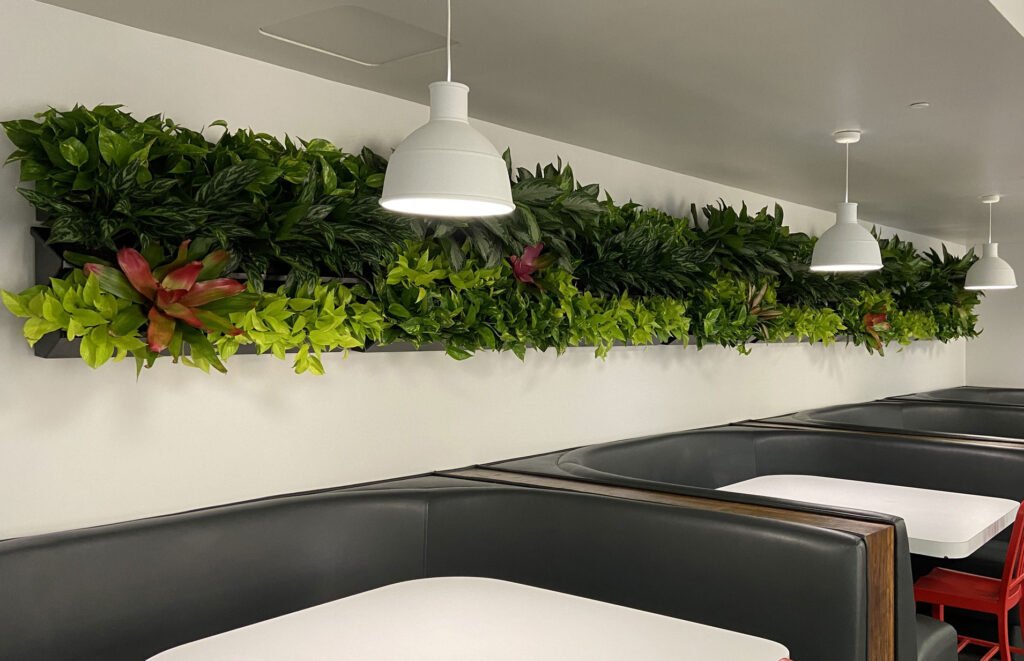Hallways are often overlooked in interior design, seen as transitional spaces rather than areas with potential to impress. Yet these passageways provide daily touchpoints for employees, clients, or visitors. Adding framed living art to these areas elevates them from purely functional corridors into spaces that engage the senses and enhance the environment. Unlike static décor, living art introduces greenery and texture, creating a stronger connection between people and their surroundings.
For businesses and organizations, integrating natural elements into design reflects an awareness of how the environment affects mood and productivity. This approach aligns with principles of biophilic design, where plants and natural materials are intentionally incorporated to promote well-being. Framed living art in hallways does more than add beauty; it helps establish healthier and more dynamic spaces.
The Appeal of Living Art in Transitional Spaces
Unlike traditional artwork, framed living art brings both visual and biological benefits. By incorporating plants into wall-mounted designs, hallways gain vibrancy and a sense of depth that cannot be achieved with framed prints or posters.
- Visual impact: Plants add rich textures, natural patterns, and soothing colors that transform sterile corridors.
- Mood enhancement: Exposure to greenery has been shown to reduce stress and improve overall satisfaction in the workplace.
- Air quality benefits: Living plants contribute to cleaner air by filtering certain pollutants, providing subtle but meaningful environmental improvements.
- Versatility: Designs can be customized to match branding, architectural style, or seasonal themes.
- Sustainability: Incorporating plants reflects eco-conscious practices that align with modern workplace values.
For hallways that often feel lifeless or purely utilitarian, the addition of living art introduces character and communicates intentional design.
How Framed Living Art Shapes Office Identity
Framed living art is more than decoration; it reflects organizational personality and values. When hallways and transitional spaces are carefully designed, they contribute to the overall brand experience. Businesses that invest in creative displays demonstrate commitment to innovation, sustainability, and employee wellness.
- Brand reinforcement: Incorporating company colors or custom arrangements aligns with corporate identity.
- Memorable spaces: Visitors are more likely to remember a workplace that features striking natural installations.
- Consistency in design: Extending thoughtful design into hallways ensures that no area feels neglected.
- Employee connection: Staff experience a sense of pride when their environment reflects care and creativity.
- Wellness-focused branding: Incorporating greenery into office spaces supports an image of balance and vitality.
As highlighted in resources about custom moss wall art, integrating natural displays can elevate corporate branding by offering a unique, tactile element that distinguishes one workplace from another.
Key Considerations for Hallway Installations
Choosing framed living art for hallways involves more than selecting attractive plants. Each installation should be carefully planned to balance aesthetics, maintenance, and practical use of space.
- Lighting conditions: Hallways often have limited natural light, so selecting plants suited to low-light conditions is essential.
- Maintenance needs: Living art requires care to remain vibrant, which may involve regular watering, pruning, or replacements.
- Traffic flow: Designs should be placed where they enhance space without obstructing movement.
- Acoustic benefits: Plants can reduce echo and improve hallway acoustics, contributing to a more comfortable atmosphere.
- Integration with design: Living art should complement existing décor and not appear as an afterthought.
Because hallways vary in size and use, professional input ensures installations are scaled correctly and maintained effectively over time.
Hallways as Part of Biophilic Design
Framed living art in hallways connects with broader biophilic design strategies, which emphasize natural elements in built environments. Hallways often act as bridges between workspaces, making them ideal for reinforcing these principles. The introduction of greenery softens architectural lines, creates a sense of rhythm, and guides movement through the space.
When combined with larger design features such as living walls, hallways become integral to an organization’s environmental strategy. Insights into biophilic office design show that natural elements improve focus, satisfaction, and employee well-being. Extending these benefits into transitional areas ensures that every part of the workspace contributes to a cohesive design experience.
Living art in hallways also encourages occupants to pause and engage with their environment. This creates a more dynamic flow within offices and reduces the monotony often associated with long, sterile corridors.
Why Professional Expertise Matters
While the concept of framed living art may appear straightforward, the execution requires specialized knowledge. Plant selection, framing, placement, and maintenance all determine whether an installation thrives or declines. Professional designers bring expertise in both horticulture and interior design, ensuring that each piece is not only visually appealing but also sustainable in the long term.
Attempting to design and install living art without proper planning often results in displays that quickly deteriorate or fail to integrate with the broader space. A professionally guided installation ensures harmony with existing design elements while addressing the specific challenges of hallway environments. With expert support, businesses can confidently transform overlooked areas into hallmarks of creativity and vitality.
Bring Life to Every Corner
Hallways need not be lifeless spaces that people simply pass through. With framed living art, these areas can inspire, refresh, and contribute to a healthier workplace. To explore custom installations that elevate interiors, contact The Wright Gardner and discover how living art can transform your hallways into striking, memorable spaces.

